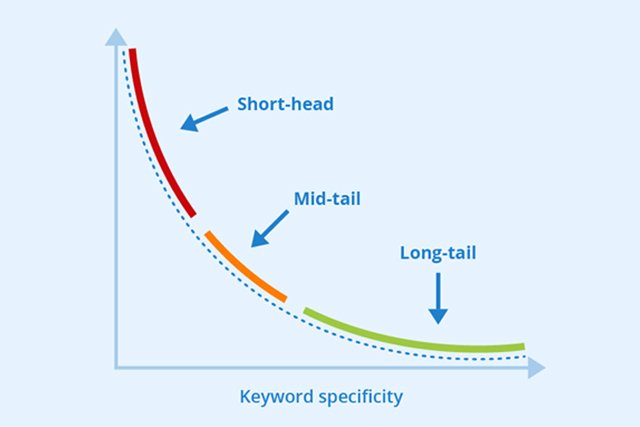SEO (Search Engine Optimization) vs ASO (App Store Optimization) is an evergreen debate regarding marketing strategies to rank websites and apps. Despite appearing quite similar, anyone familiar with both knows how far apart they are in utility.
App Store Optimization is improving an app’s visibility to win more downloads. In comparison, Search Engine Optimization improves a website’s ranking to drive more organic traffic.
You see, there’s a slight difference there, downloads and traffic!
However, the confusion is drawn mainly from how ASO is often described as SEO for apps. Though both the terms involve Optimization, they’re both for different platforms and algorithms. Your SEO proficiency does little good in ranking your app higher on App Stores and vice versa!
Definition (SEO vs ASO)
What is ASO? (App Store Optimization)

ASO is improving your app’s ranking on the only competitive platform, the app store chart. Whether it is ranking on high-volume keywords or driving sales through advertisements, the target always revolves around downloads.
Since the search queries on app stores are much shorter and brief, ranking on various search terms is essential. It makes your app more visible, rises in the app store charts, and eventually gets a chance to be featured.
What is SEO (Search Engine Optimization)

Search Engine Optimization has one goal: to drive more organic traffic to a website. This happens through several on-page and off-page SEO techniques and increasing webpages to gain authority among search engines.
The queries on a search engine are longer and specific; people usually need a quick answer. This gives SEO practitioners a chance to prove their authority and expertise. So, it can be said that SEO is a mix of quality content and audience engagement.
The Ranking Factors: SEO vs ASO

A ranking factor is how a search engine evaluates your website (or how an App Store evaluates your app). Competitive criteria and complex algorithms determine your web page or app’s ranking.
Before we strike down the similarities and differences between the two practices, you need to know how your content (Website/App) is ranked. The following are the ranking factors for both SEO and ASO.
ASO Rankings Factors
| On-Page | Off-Page |
| App Title (Apple/Android) | Total Downloads (Apple/Android) |
| App Subtitle (Apple) | Download Velocity (Apple/Android) |
| Short Description (Android) | Conversion Rate (Apple/Android) |
| Long Description (Android) | Retention and Engagement (Apple/Android) |
| Keyword Density (Android) | Reviews And Ratings (Apple/Android) |
| Keyword Field (Apple) | Crash Rate (Apple/Android) |
| In-app Purchases (Apple) | Backlinks (Android) |
| Publisher Name (Apple/Android) |
SEO Ranking Factors
| On-Page | Off-Page |
| Keywords In Title | Page Speed |
| Keywords in Headers | Backlinks |
| Content Quality | Domain Authority |
| Content Relevance | Click-through Rate |
| Content Length & Structure | Bounce Rate |
| Optimized URLs | Time spent on page |
| Meta Tags |
SEO vs ASO: Similarities
There is more than one way to look at the SEO vs ASO debate, as they have much more in common than just the presence of Optimization in both. But to find out what fired the “SEO for apps” and “Mobile SEO” rumors about ASO, we have compiled a brief look into the similarities of both below.
Visibility In Search Results

If it isn’t obvious enough, both strategies aim to bring your website or app near the top of search results. The basic idea is to boost organic traffic to your web page or app, whether from Google search results or App Store search results.
In ASO, you need to get an audience for your app interested in your offer. And this happens through the utilization of keywords and ranking on similar terms. On the contrary, SEO is getting your content in front of the right crowd by throwing LSI keywords, content quality, and intent into the mix.
Hence, a conclusion is drawn, and it can be said that both intend for the same thing: search visibility!
Driving Organic Traffic

Organic traffic is when users arrive at your website/app via a natural way to find what they need. It can be an informational article for a website or a useful app. Although the ranking factors differ for both, both strive for the same ideal principle.
SEO and ASO are both classified as inbound marketing. And that takes out ad-marketing from the equation. Although ASO benefits more from outbound marketing, it is still of no value if the conversion isn’t organic.
Both strategies are trustworthy and rely on natural ways to drive organic traffic. A user with queries you have answers for will likely click and download or spend time on your website. Converting such users is much easier and drives more profit.
You can also boost the organic traffic to a website by incorporating visuals. Graphic designing gives your website a personalized look, which eventually builds loyalty and drives traffic.
Keyword-Based-Strategies

Extensive keyword research and strategic placement of keywords are essential for both SEO and ASO. The strategies are based on analyzing user responses, evaluating the competition, utilizing long-tail keywords, and finding relevant phrases.
Also, both strategies play on non-branded visibility. Non-branded visibility is finding relevant keywords based on generic searches that still have intent. This content effectively improves your search ranking and drives organic traffic to both strategies.
SEO Vs ASO: Differences
We now know the ranking factors for SEO vs ASO and what similarities they have. So, let’s head into what makes them so different and why one can’t be an alternative to the other.
| SEO | ASO |
| Paid promotion does not drive organic traffic or improve visibility. | Paid traffic influences organic downloads and visibility. |
| Any decision about the strategy can take up to 6 months to assess accurately. | Downloads or clicks improve ranking and visibility. |
| Users’ search intent is to browse for products, services, brands, or specific answers. | Search intent is based on when a user is looking for a new or alternative app. |
| SEO evaluation can take a few months, delaying a website’s critical time. | Progress can be assessed after the first few weeks for strategy change/improvement. |
| SEO evaluation can take few months, delaying the critical time of a website. | The critical time for the strategy to set in is in the beginning. |
1. Searcher’s Intent

The biggest difference between SEO and ASO is how users search on these different platforms. You enter a specific question or a query in a search engine. And so, the results, too, are ranked based on relevance, authority, intent, and quality.
On the contrary, you don’t search for questions in an App Store. People surfing through an app store are solely finding an app that best matches their needs.
This makes the ranking criteria and algorithms different for each one. Each strategy needs a different set of tools to analyze data and a different technique to implement an action.
Understanding the searcher’s intent is a cornerstone for increasing your engagement on Facebook and other social media platforms. It helps you provide your viewers with the content they like.
2. Visibility Factors
The only common visibility factor for both strategies is quality. No matter how well you manage to rank your website or app, it will surely be demoted if the user experience is not satisfactory. I.e., suppose your website fails to satisfy viewers because of poor content or your app sees a high uninstall rate. In that case, you’re likely to lose visibility.
However, let’s review the other aspects that affect visibility and how they differ for SEO and ASO.
Paid-Traffic
Paid-traffic is a major difference-maker for both strategies. SEO is unaffected by the paid audience, and it neither improves a website’s ranking nor its visibility.
On the contrary, ASO benefits from broader visibility through paid advertisements like Google Ads. In ASO, the main ranking factor is the number of downloads. And even though the algorithms in App Stores detect unorganic or paid-traffic, it doesn’t affect your downloads score.
So, it is established that ASO benefits from paid-traffic, whereas SEO is unaffected by it.
New App/Website Ranking
App Stores are known to favor newly developed apps as it has a section dedicated to it. Moreover, a new app release may also show a slight keyword ranking and visibility advantage.
However, there is no such case with SEO. A website only sees the top of search results if all the ranking factors are checked. And why not? With the number of websites created daily, search engines will lose most of their relevance if they start favoring newly established websites.
Ratings and Reviews
Ratings and Reviews is a compulsory section on any App Store. A viewer normally trusts the user’s reviews and ratings more than the description provided by a developer. Hence, it is a strong ranking factor for ASO as it directly reflects the App experience.
Websites usually have testimonials and feedback sections when providing services. But it is irrelevant to how well it ranks on search engines.
3. Evaluation Time

The evaluation time for a strategy is quite decent between SEO and ASO. You can soft-launch an app with different keyword targets and track your progress within the next few weeks. As it paves the way for a stronger launching of the app and catering to your strategy, you start seeing results quite soon.
On the contrary, websites take much longer to evaluate an SEO strategy. However, you have to wait up to six months to see if the changes you made impact your ranking. The SEO efforts, observation, and evaluation of a website have more inertia. And that’s why it is usually a game of patience and effective SEO campaigns.
4. Customization

A major pro for SEO against ASO is how thoroughly you can customize your website. You’re allowed to include as much content, infographics, animations, videos, designs, and visuals as you see fit. Perhaps it is because of the nature of the SEO ecosystem. You have complete authority in providing viewers with the information they need and do it any way you want.
But on ASO, you’re much more limited to the content you share for your App promotion. Also, you rely more on the ratings and reviews of your apps to do the work.
Moreover, a wider horizon for SEO gives you much space to move around and improve your strategy.
5. KPI
The metrics used by both strategies vary as well. You approach a user’s behavior in different ways in SEO than you do in ASO. Here are the metrics or KPI for both:
| SEO (KPI) | ASO (KPI) |
| Link Profile | Keywords Ranking |
| Keywords Ranking | Top Charts Ranking |
| Click-Through-Rate | Featured Tracking |
| Organic Traffic | Conversion Rate to Visit |
| Google Page-Speed | Ratings and Reviews |
| Bounce Rate | Organic Downloads |
| Revenue | Revenue |
| Organic Uplift |
The Verdict
Search engines are in continuous motion of evolution. The SEO we had about five years back doesn’t apply to today’s advanced algorithms and criteria. And even though SEO and ASO may not be useful as an alternative to each other, they can provide a very effective marketing strategy when combined.
If you are an app developer looking for ways to incorporate your SEO expertise in ASO, then perhaps launching a website for your app is the best way to go. You can drive organic traffic to your website through factual and quality content. And in turn, guide that traffic to your app for increased downloads.





